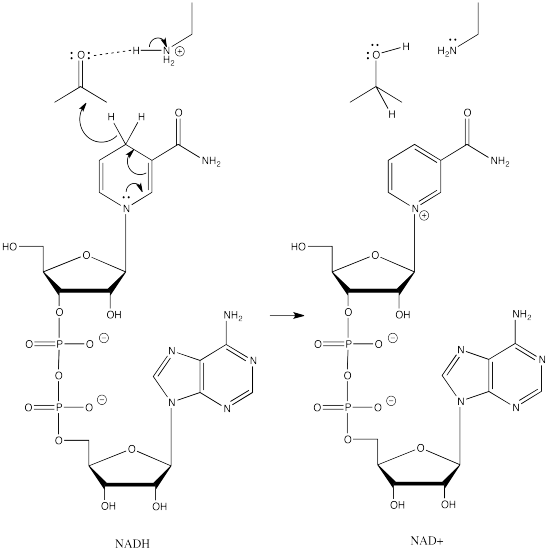17.4: Alcohols from Carbonyl Compounds- Reduction
- Page ID
- 36348
\( \newcommand{\vecs}[1]{\overset { \scriptstyle \rightharpoonup} {\mathbf{#1}} } \)
\( \newcommand{\vecd}[1]{\overset{-\!-\!\rightharpoonup}{\vphantom{a}\smash {#1}}} \)
\( \newcommand{\dsum}{\displaystyle\sum\limits} \)
\( \newcommand{\dint}{\displaystyle\int\limits} \)
\( \newcommand{\dlim}{\displaystyle\lim\limits} \)
\( \newcommand{\id}{\mathrm{id}}\) \( \newcommand{\Span}{\mathrm{span}}\)
( \newcommand{\kernel}{\mathrm{null}\,}\) \( \newcommand{\range}{\mathrm{range}\,}\)
\( \newcommand{\RealPart}{\mathrm{Re}}\) \( \newcommand{\ImaginaryPart}{\mathrm{Im}}\)
\( \newcommand{\Argument}{\mathrm{Arg}}\) \( \newcommand{\norm}[1]{\| #1 \|}\)
\( \newcommand{\inner}[2]{\langle #1, #2 \rangle}\)
\( \newcommand{\Span}{\mathrm{span}}\)
\( \newcommand{\id}{\mathrm{id}}\)
\( \newcommand{\Span}{\mathrm{span}}\)
\( \newcommand{\kernel}{\mathrm{null}\,}\)
\( \newcommand{\range}{\mathrm{range}\,}\)
\( \newcommand{\RealPart}{\mathrm{Re}}\)
\( \newcommand{\ImaginaryPart}{\mathrm{Im}}\)
\( \newcommand{\Argument}{\mathrm{Arg}}\)
\( \newcommand{\norm}[1]{\| #1 \|}\)
\( \newcommand{\inner}[2]{\langle #1, #2 \rangle}\)
\( \newcommand{\Span}{\mathrm{span}}\) \( \newcommand{\AA}{\unicode[.8,0]{x212B}}\)
\( \newcommand{\vectorA}[1]{\vec{#1}} % arrow\)
\( \newcommand{\vectorAt}[1]{\vec{\text{#1}}} % arrow\)
\( \newcommand{\vectorB}[1]{\overset { \scriptstyle \rightharpoonup} {\mathbf{#1}} } \)
\( \newcommand{\vectorC}[1]{\textbf{#1}} \)
\( \newcommand{\vectorD}[1]{\overrightarrow{#1}} \)
\( \newcommand{\vectorDt}[1]{\overrightarrow{\text{#1}}} \)
\( \newcommand{\vectE}[1]{\overset{-\!-\!\rightharpoonup}{\vphantom{a}\smash{\mathbf {#1}}}} \)
\( \newcommand{\vecs}[1]{\overset { \scriptstyle \rightharpoonup} {\mathbf{#1}} } \)
\( \newcommand{\vecd}[1]{\overset{-\!-\!\rightharpoonup}{\vphantom{a}\smash {#1}}} \)
\(\newcommand{\avec}{\mathbf a}\) \(\newcommand{\bvec}{\mathbf b}\) \(\newcommand{\cvec}{\mathbf c}\) \(\newcommand{\dvec}{\mathbf d}\) \(\newcommand{\dtil}{\widetilde{\mathbf d}}\) \(\newcommand{\evec}{\mathbf e}\) \(\newcommand{\fvec}{\mathbf f}\) \(\newcommand{\nvec}{\mathbf n}\) \(\newcommand{\pvec}{\mathbf p}\) \(\newcommand{\qvec}{\mathbf q}\) \(\newcommand{\svec}{\mathbf s}\) \(\newcommand{\tvec}{\mathbf t}\) \(\newcommand{\uvec}{\mathbf u}\) \(\newcommand{\vvec}{\mathbf v}\) \(\newcommand{\wvec}{\mathbf w}\) \(\newcommand{\xvec}{\mathbf x}\) \(\newcommand{\yvec}{\mathbf y}\) \(\newcommand{\zvec}{\mathbf z}\) \(\newcommand{\rvec}{\mathbf r}\) \(\newcommand{\mvec}{\mathbf m}\) \(\newcommand{\zerovec}{\mathbf 0}\) \(\newcommand{\onevec}{\mathbf 1}\) \(\newcommand{\real}{\mathbb R}\) \(\newcommand{\twovec}[2]{\left[\begin{array}{r}#1 \\ #2 \end{array}\right]}\) \(\newcommand{\ctwovec}[2]{\left[\begin{array}{c}#1 \\ #2 \end{array}\right]}\) \(\newcommand{\threevec}[3]{\left[\begin{array}{r}#1 \\ #2 \\ #3 \end{array}\right]}\) \(\newcommand{\cthreevec}[3]{\left[\begin{array}{c}#1 \\ #2 \\ #3 \end{array}\right]}\) \(\newcommand{\fourvec}[4]{\left[\begin{array}{r}#1 \\ #2 \\ #3 \\ #4 \end{array}\right]}\) \(\newcommand{\cfourvec}[4]{\left[\begin{array}{c}#1 \\ #2 \\ #3 \\ #4 \end{array}\right]}\) \(\newcommand{\fivevec}[5]{\left[\begin{array}{r}#1 \\ #2 \\ #3 \\ #4 \\ #5 \\ \end{array}\right]}\) \(\newcommand{\cfivevec}[5]{\left[\begin{array}{c}#1 \\ #2 \\ #3 \\ #4 \\ #5 \\ \end{array}\right]}\) \(\newcommand{\mattwo}[4]{\left[\begin{array}{rr}#1 \amp #2 \\ #3 \amp #4 \\ \end{array}\right]}\) \(\newcommand{\laspan}[1]{\text{Span}\{#1\}}\) \(\newcommand{\bcal}{\cal B}\) \(\newcommand{\ccal}{\cal C}\) \(\newcommand{\scal}{\cal S}\) \(\newcommand{\wcal}{\cal W}\) \(\newcommand{\ecal}{\cal E}\) \(\newcommand{\coords}[2]{\left\{#1\right\}_{#2}}\) \(\newcommand{\gray}[1]{\color{gray}{#1}}\) \(\newcommand{\lgray}[1]{\color{lightgray}{#1}}\) \(\newcommand{\rank}{\operatorname{rank}}\) \(\newcommand{\row}{\text{Row}}\) \(\newcommand{\col}{\text{Col}}\) \(\renewcommand{\row}{\text{Row}}\) \(\newcommand{\nul}{\text{Nul}}\) \(\newcommand{\var}{\text{Var}}\) \(\newcommand{\corr}{\text{corr}}\) \(\newcommand{\len}[1]{\left|#1\right|}\) \(\newcommand{\bbar}{\overline{\bvec}}\) \(\newcommand{\bhat}{\widehat{\bvec}}\) \(\newcommand{\bperp}{\bvec^\perp}\) \(\newcommand{\xhat}{\widehat{\xvec}}\) \(\newcommand{\vhat}{\widehat{\vvec}}\) \(\newcommand{\uhat}{\widehat{\uvec}}\) \(\newcommand{\what}{\widehat{\wvec}}\) \(\newcommand{\Sighat}{\widehat{\Sigma}}\) \(\newcommand{\lt}{<}\) \(\newcommand{\gt}{>}\) \(\newcommand{\amp}{&}\) \(\definecolor{fillinmathshade}{gray}{0.9}\)After completing this section, you should be able to
- determine whether a given reaction should be classified as an oxidation or a reduction.
- write an equation to represent the reduction of an aldehyde or ketone using sodium borohydride or lithium aluminum hydride.
- discuss the relative advantages and disadvantages of using sodium borohydride or lithium aluminum hydride to reduce aldehydes or ketones to alcohols.
- identify the product formed from the reduction of a given aldehyde or ketone.
- identify the aldehyde or ketone that should be used to produce a given alcohol in a reduction reaction.
- identify the best reagent to carry out the reduction of a given aldehyde or ketone.
- write an equation to represent the reduction of an ester or a carboxylic acid to an alcohol.
- identify the product formed from the reduction of a given ester or carboxylic acid.
- identify the esters or carboxylic acids that could be reduced to form a given alcohol.
Make certain that you can define, and use in context, the key terms below.
- (organic) oxidation
- (organic) reduction
In your course in first‑year general chemistry, you probably discussed oxidation‑reduction reactions in terms of the transfer of electrons and changes in oxidation numbers (oxidation states). In organic chemistry, it is often more convenient to regard reduction as the gain of hydrogen or loss of oxygen, and oxidation as the gain of oxygen or the loss of hydrogen. There is no contradiction in using these various definitions. For example, when hydrogen is added across the double bond of ethene to reduce it to ethane, the oxidation number of the doubly bonded carbon atoms decreases from −II to −III. Similarly, when 2‑propanol

is oxidized to acetone

hydrogen is removed from the compound and the oxidation number of the central carbon atom increases from 0 to +II. If necessary, review the concept of oxidation number.
Reduction of Aldehydes and Ketones
Like carbon, hydrogen can be used as a nucleophile if it is bonded to a metal in such a way that the electron density balance favors the hydrogen side. A hydrogen atom that carries a net negative charge and bears a pair of unshared electrons is called a hydride ion (-:H). How much of the negative charge density resides on hydrogen depends on the difference in electronegativity between hydrogen and the metal it’s bonded to.
The most common sources of the hydride nucleophile are lithium aluminum hydride (LiAlH4) and sodium borohydride (NaBH4). Note! The hydride anion is not present during this reaction; rather, these reagents serve as a source of hydride due to the presence of a polar metal-hydrogen bond. Because aluminum is less electronegative than boron, the Al-H bond in LiAlH4 is more polar, thereby, making LiAlH4 a stronger reducing agent.

Addition of a hydride anion (H:-) to an aldehyde or ketone gives an alkoxide anion, which on protonation yields the corresponding alcohol. Aldehydes produce 1º-alcohols and ketones produce 2º-alcohols. These reactions will be discussed in more detail in Chapter 19.
Predicting the Product of a Hydride Addition to a Carbonyl
During the reduction the C=O double bond in the reactant and forms a C-O single bond in the product. The breaking of the C=O double bond allows for the formation of two single bonds in the product. One will be attached to the oxygen and one to the carbon which originally in the carbonyl. Both of these single bonds will be attached to an "H" in the product formed.


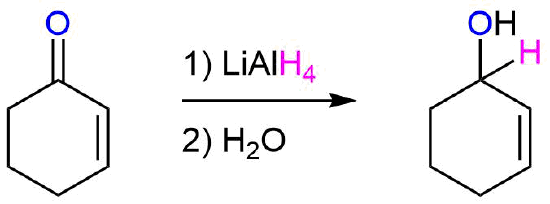
Mechanism
Both NaBH4 and LiAlH4 act as if they were a source of the hydride anion nucleophile. They hydride anion undergoes nucleophilic addition to the carbonyl carbon to form a C-H single bond and forming a tetrahedral alkoxide ion intermediate. The alkoxide ion is subsequently converted to an alcohol by reaction with a proton source. In the LiAlH4 reduction, the resulting alkoxide salts are insoluble and need to be hydrolyzed (with care) before the alcohol product can be isolated. In the borohydride reduction the hydroxylic solvent system achieves this hydrolysis automatically. The lithium, sodium, boron and aluminum end up as soluble inorganic salts.
Note! The reaction and the corresponding mechanism of hydride reductions of carbonyls is fairly complicated. The following mechanism has been simplified for easier understanding..
1) Nucleophilic attack to form a tetrahedral alkoxide intermediate
2) Protonation to form an alcohol
In metal hydride reductions the resulting alkoxide salts are insoluble and need to be hydrolyzed (with care) before the alcohol product can be isolated. In the sodium borohydride reduction the methanol solvent system achieves this hydrolysis automatically. In the lithium aluminum hydride reduction water is usually added in a second step. The lithium, sodium, boron and aluminum end up as soluble inorganic salts at the end of either reaction. Note! LiAlH4 and NaBH4 are both capable of reducing aldehydes and ketones to the corresponding alcohol.
Biological Reduction
Aldehydes, ketones and alcohols are very common features in biological molecules. Converting between these compounds is a frequent event in many biological pathways. However, semi-anionic compounds like sodium borohydride don't exist in the cell. Instead, a number of biological hydride donors play a similar role.
NADH is a common biological reducing agent. NADH is an acronym for nicotinamide adenine dinucleotide hydride. Instead of an anionic donor that provides a hydride to a carbonyl, NADH is actually a neutral donor. It supplies a hydride to the carbonyl under very specific circumstances. In doing so, it forms a cation, NAD+. However, NAD+ is stabilized by the fact that its nicotinamide ring is aromatic; it was not aromatic in NADH.
Reduction of Carboxylic Acids and Esters
Carboxylic acids and esters can be converted to 1o alcohols using Lithium aluminum hydride (LiAlH4).
Note that NaBH4 is not strong enough to convert carboxylic acids or esters to alcohols. Notice that during these reaction two hydrogen atoms are added the to carbonyl carbon whereas only one hydrogen atom was added during aldehyde and ketone reductions. These reactions will be discussed in more detail in Chapter 21.


How would you prepare the following molecules using a hydride reduction?
a)
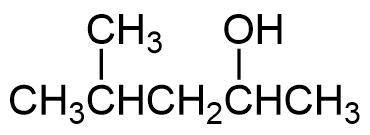
b)

- Answer
-
Analysis: The first step is to note if the target molecule is a 1o or 2o alcohol. Primary alcohols can be made by the hydride reduction of an aldehyde, carboxylic acid, or ester while secondary alcohols are made by the reduction of ketones. A 3o alcohol cannot be made by a hydride reduction. Also, it is important to remember than aldehydes and ketones can be reduced by both NaBH4 and LiAlH4 whereas carboxylic acids and ester can only be reduced by LiAlH4.
a) Because the target molecule is a secondary alcohol the starting material must be a ketone.

b) Because the target molecule is a primary alcohol the starting material could be an aldehyde, a carboxylic acid, or an ester.
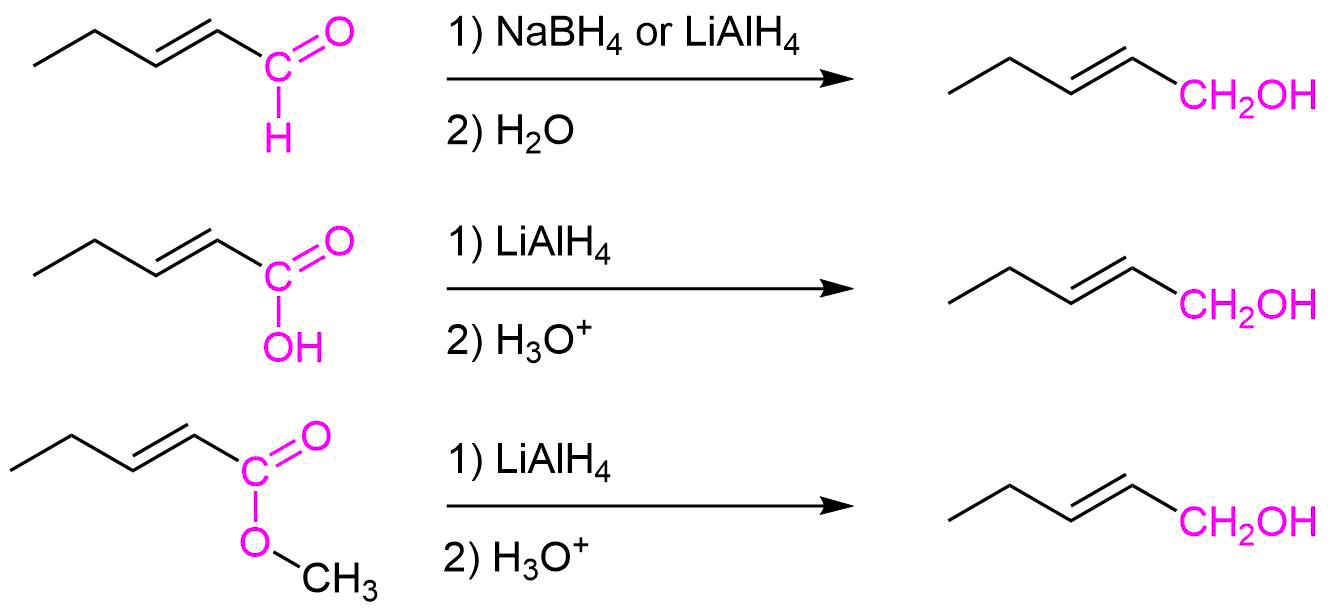
Exercises
1) Give the aldehyde, ketone, or carboxylic acid (there can be multiple answers) that could be reduced to form the following alcohols.
a) 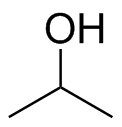 b)
b)  c)
c)  d)
d) 
2) Given the following alcohol, draw the structure from which it could be derived using only NaBH4
a) 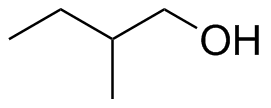 b)
b)  c)
c) 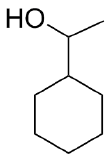 d)
d)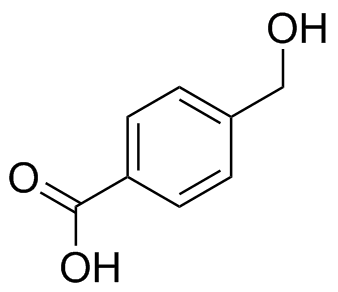
- Answer
-
1)
a)
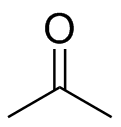 b)
b)  c)
c)  d)
d) 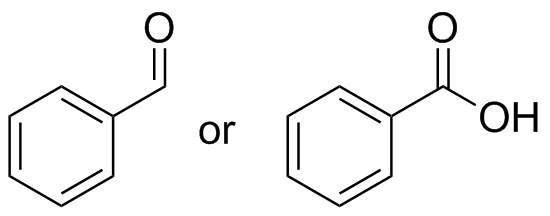
2) Note, NaBH4 is only a strong enough reducing agent to reduce ketones and aldehydes.
a)
b)
Give the aldehyde, ketone, or carboxylic acid (there can be multiple answers) that could be reduced to form the following alcohols.
- Answer
-
Given the following alcohol, draw the structure from which it could be derived using only NaBH4.
- Answer
-
Note: NaBH4 is only a strong enough reducing agent to reduce ketones and aldehydes.



